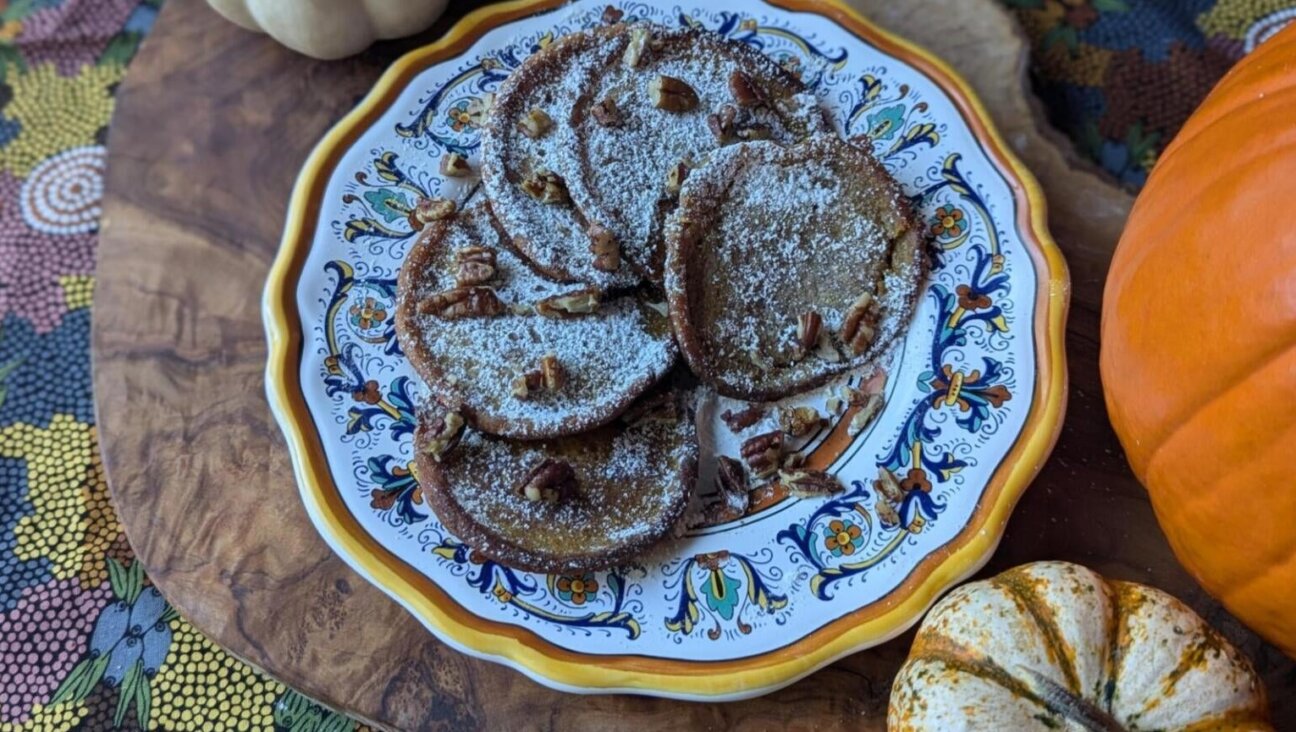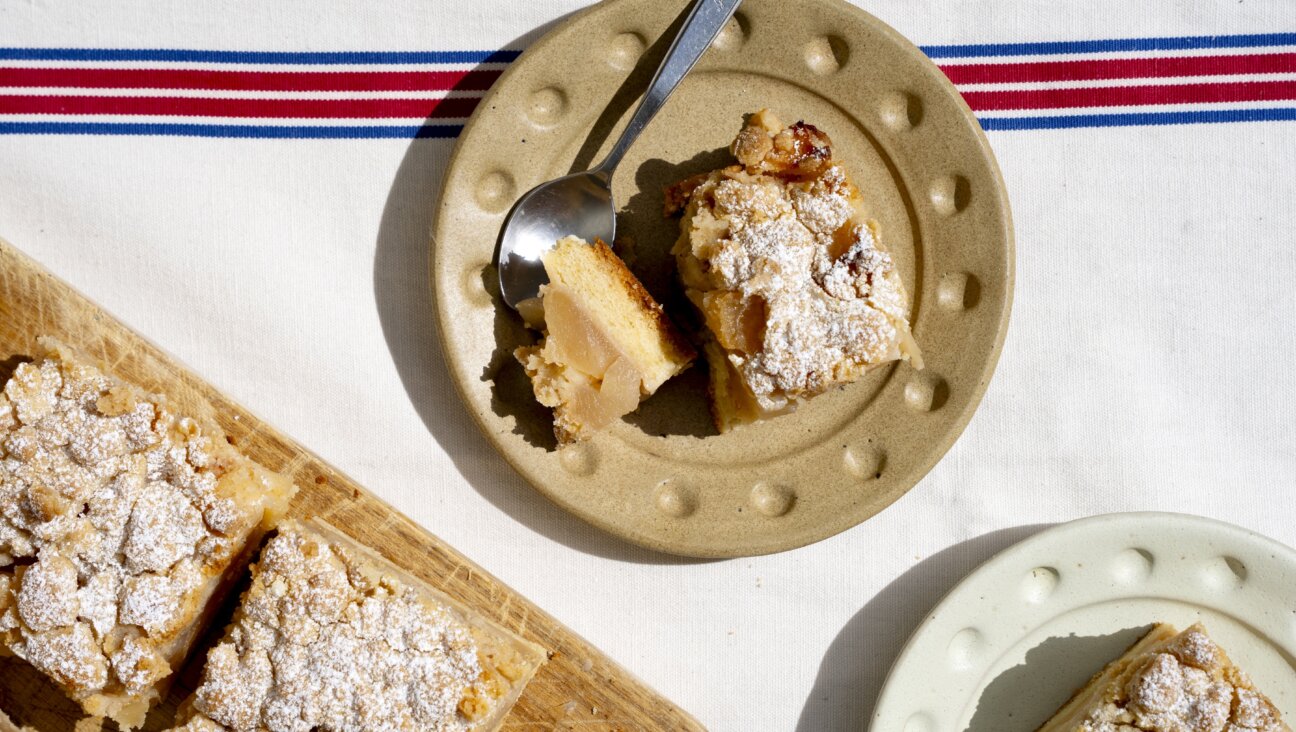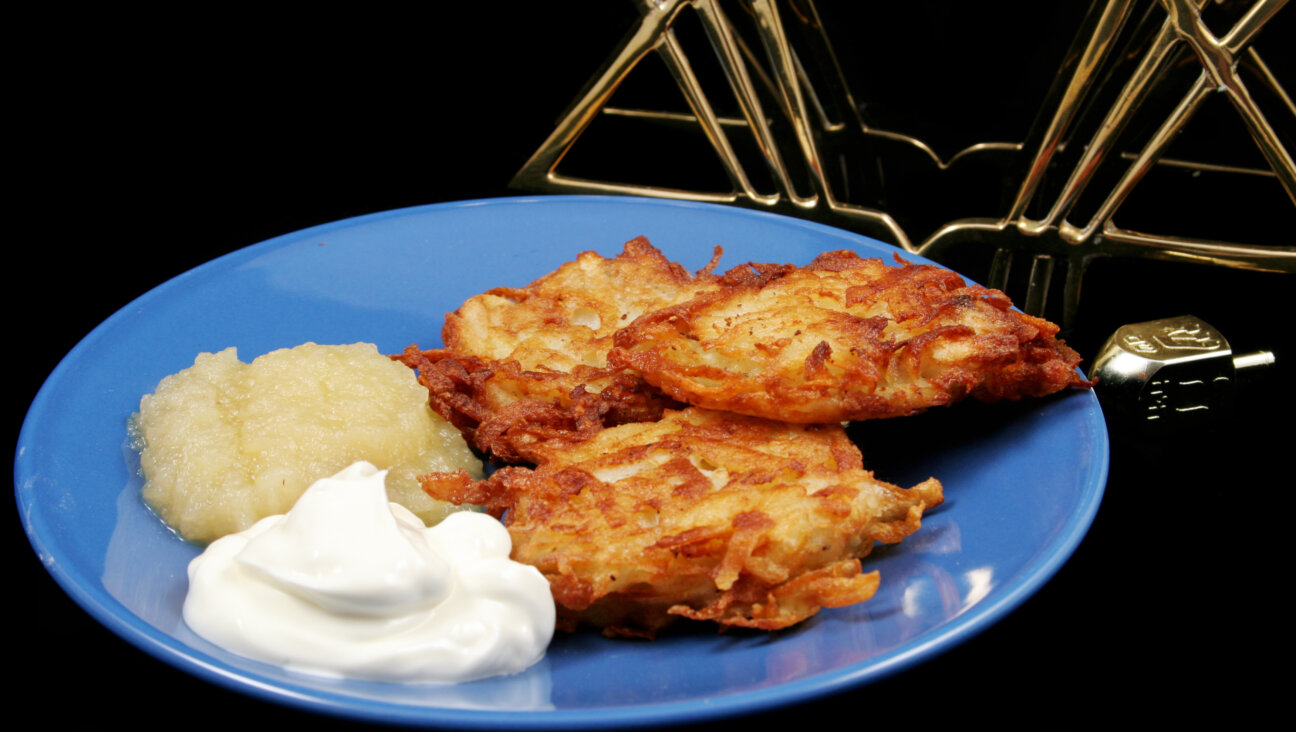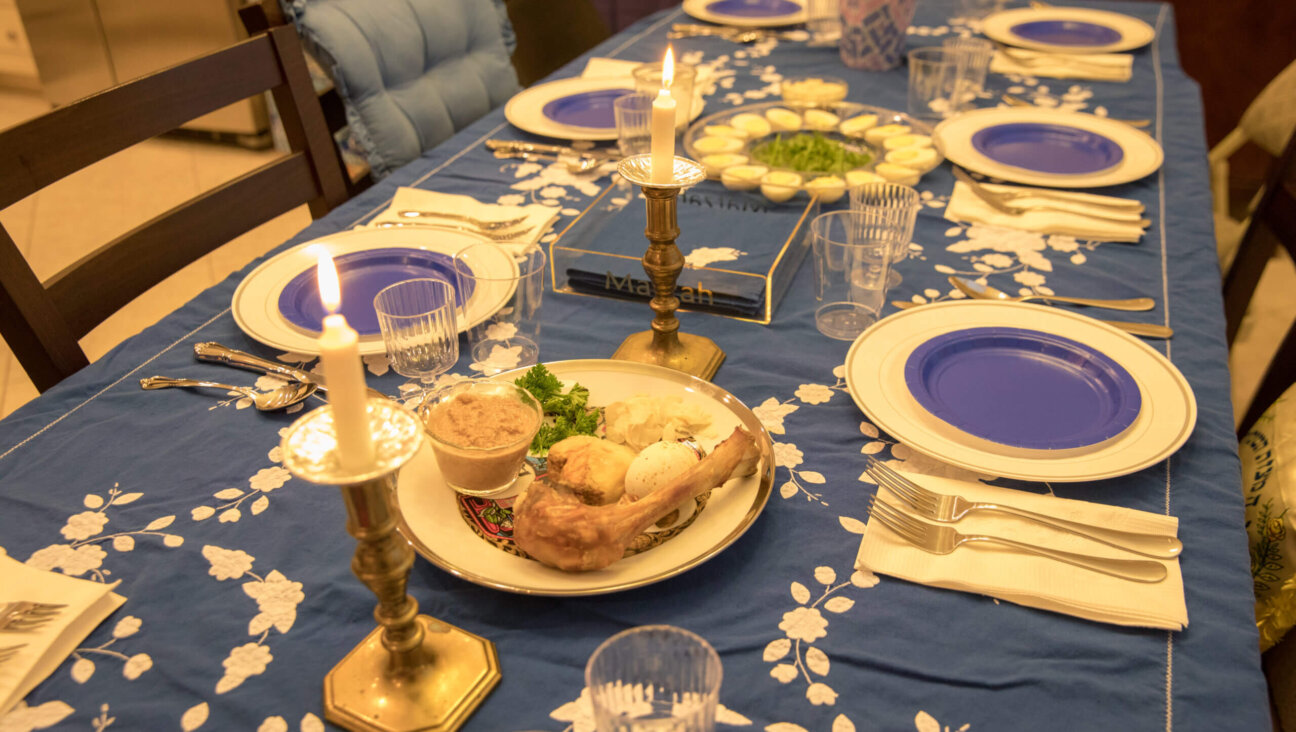Jewish Foods of the Past: Stuffed Swiss Chard

Graphic by Angelie Zaslavsky
In 1916, the New York Board of Health issued a concise 36 page recipe book aimed at Jewish American homemakers. Published bilingually in both Yiddish and English, “How to Cook for the Family” contained recipes for such “plain, substantial and wholesome” dishes as tomato soup, beef stew and cornstarch pudding. So far as we can tell, the book was a flop among its intended audience. When a reporter working on a story about it asked a couple of Yiddishe homemakers for their opinion, the women told her off.
“The Board of health ain’t got no right to say what I should cook and how,” one woman, explained, in the cadence of a Jimmy Cagney tough-guy. “The East Side is the East Side,” her friend agreed. “I make like my Grossmutter Selig and my mother, Gefullte fish and stuffed helzel. What [do] I care for the Board of Health?”
Interestingly, both of the dishes the women named are stuffed foods — gefilte or “stuffed” fish, and stuffed poultry neck. Neither is “plain” or simple to prepare. Rather, they require both large investments of time and attention to detail, as did so many of the filled foods that were mainstays of our ancestors’ kitchens.
In their significance, these stuffed foods pull in two opposing directions. On the one hand, they embody a strategy for stretching expensive ingredients. On the other, they were some of the most impressive of all Jewish celebration foods, one of the many culinary examples of how cooks spun prestige out of poverty.
In 1945, the food editor at the Yiddish Forward, a woman named Regina Frishwasser, published the “Jewish American Cookbook,” the “prize-winning” recipes culled from ten years of readers’ submissions. Like all community cookbooks, Frishwasser’s is a glimpse at the culinary adventures of real homemakers at a particular moment in time.
By my count, over 120 of the recipes here are for stuffed or filled foods, many of them classics carried over from the old-country. Frishwasser offers 19 varieties of knish, 11 kinds of kreplach, and 13 recipes for stuffed cabbage, each sent in by a woman convinced that her variation was superior to all others. Many depart from the usual filling of ground meat and rice. One, for example, uses a knish-like combination of grated potatoes, chicken cracklings, fried onions and buckwheat groats. Another is filled as if it were rugelach with chopped walnuts and raisins.
A recipe that appealed to me calls for roughly equal proportions of lentils, rice and ground meat (in this case veal) which I decided to wrap in more delicate chard leaves. In place of the veal, I substituted ground lamb, though any ground meat will work. The rolled-up vegetables are then simmered in broth — not in tomato sauce — brightened by a healthy squeeze of lemon juice.
Stuffed Chard with Lamb, Rice, and Lentils
1 small onion, finely chopped
5 tablespoons olive oil
½ cup green lentils
2 ½ cups water
½ cup long grain rice
¾ teaspoon salt
a few grinds black pepper
¼ chopped dill
½ pound chopped lamb
2 bunches white chard or Lacinto kale (about 16 leaves)
3 tablespoons lemon juice
1 cup beef or vegetable broth
Sauté onions in 2 tablespoons of the olive oil. When nicely wilted, add lentils. Turn to coat. Add 1½ cups of the water, cover and bring to a simmer. Cook gently for 10 minutes. Remove cover and allow liquid to cook off. Stir in the rice. Add remaining cup water, salt and pepper. Bring to a simmer and cook until liquid has evaporated. Stir in dill. Allow to cool, then combine with chopped lamb. Season with salt and pepper.
Meanwhile, trim stems from chard or kale leaves. Blanch for 1-2 minutes or until pliable. Drain and rinse under running cold water.
Lay one leaf flat, “shiny” side down, with narrow end pointing away from you. Scoop up ¼ cup of filling, form into a stubby cigar shape and lay it across the bottom of the chard. Fold leaf over to cover filling, then fold over the sides of leaf and continue rolling upward into a cylinder 3-4 inches long.
Arrange stuffed chard in a pot, seam side down, so they are snuggly packed. Drizzle with the remaining 3 tablespoons olive oil and the lemon juice. Add broth and enough water to cover. Lay a plate on top to weigh down cylinders. Bring to a gentle simmer. Cover pot and cook over a low flame 40-50 minutes. Serve with lemon wedges.

















